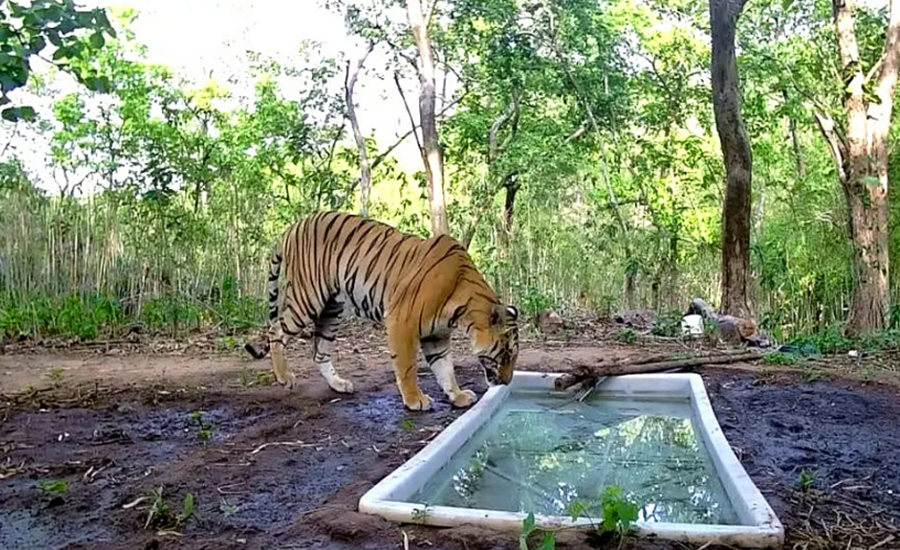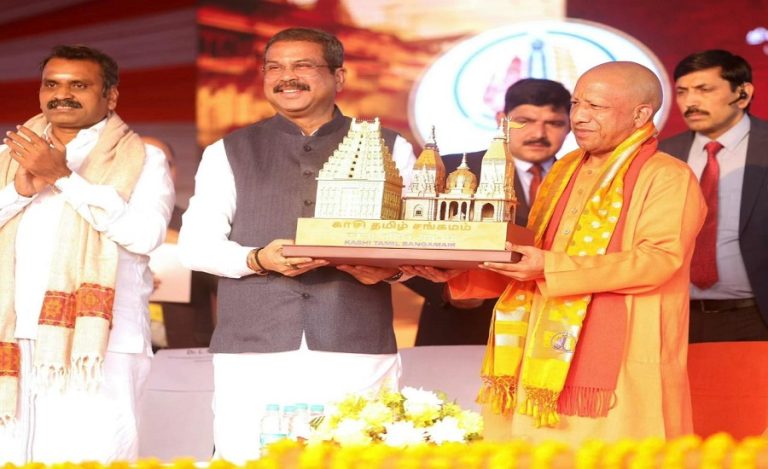A wild tiger has returned to Gujarat after several decades, establishing a continuous presence in Dahod’s Ratanmahal Wildlife Sanctuary for nine consecutive months—the longest tiger stay recorded in the state’s modern history. Forest officials hailed this as a landmark development for Gujarat’s ecosystem, while Environment Minister Mr. Arjun Modhwadia called it a “historic moment” that positions Gujarat among the few Indian states hosting lions, leopards, and tigers together.
Natural Migration Signals Ecological Revival
The four-year-old male tiger, first spotted in February 2025, wandered naturally from Madhya Pradesh, drawn by the expanding tiger population there and the availability of a suitable habitat in Gujarat. Unlike a tiger sighted in Mahisagar district in 2019 that died within 20 days due to scarce prey, the Ratanmahal tiger has found ample food, water, and shelter, highlighting a significant ecological recovery in the region.
Ratanmahal: A Thriving Habitat for Apex Predators
Officials report that the tiger’s permanent stay indicates a healthier ecosystem. With improved prey availability, water sources, and vegetation, Ratanmahal now supports long-term habitation for apex predators. Advanced camera traps and surveillance teams are continuously monitoring the tiger’s movements, territorial behavior, and prey interactions to ensure its safety and study its impact on the sanctuary’s biodiversity.
Gujarat Joins Elite Wildlife States
Mr. Arjun Modhwadia emphasized that Gujarat, already home to the Asiatic lion, now also hosts the Indian tiger and leopard within the same landscape. “For nine months, the tiger has lived in the Ratanmahal Sanctuary, and this is a proud moment for Gujarat,” he said. “We are the only state in India where all three big cats coexist in a natural habitat.”
Balancing Conservation and Human Safety
While the tiger’s return is a conservation triumph, officials are cautious about overlapping corridors shared with lions and leopards. The Forest Department has implemented continuous monitoring and safeguards near human settlements to ensure safety while allowing the tiger to thrive. A viral video of the tiger has further increased public awareness and support for wildlife conservation efforts in the state.
Looking Ahead: Long-Term Conservation
The tiger’s presence is not just a milestone—it reflects the success of habitat restoration and wildlife management in Gujarat. Authorities are committed to maintaining the delicate balance between human activity and wildlife, making sure that Ratanmahal continues to serve as a safe haven for India’s iconic big cats.



























